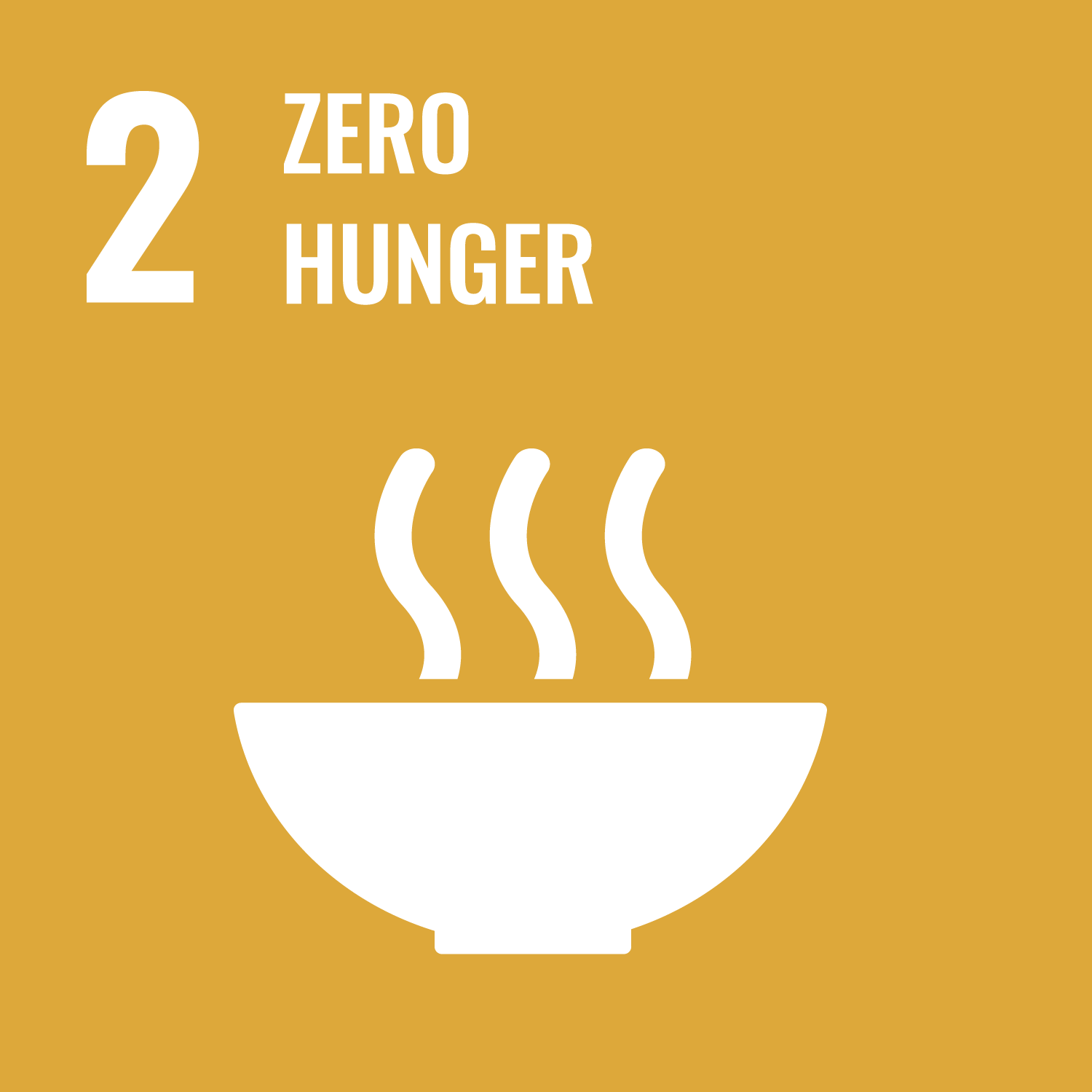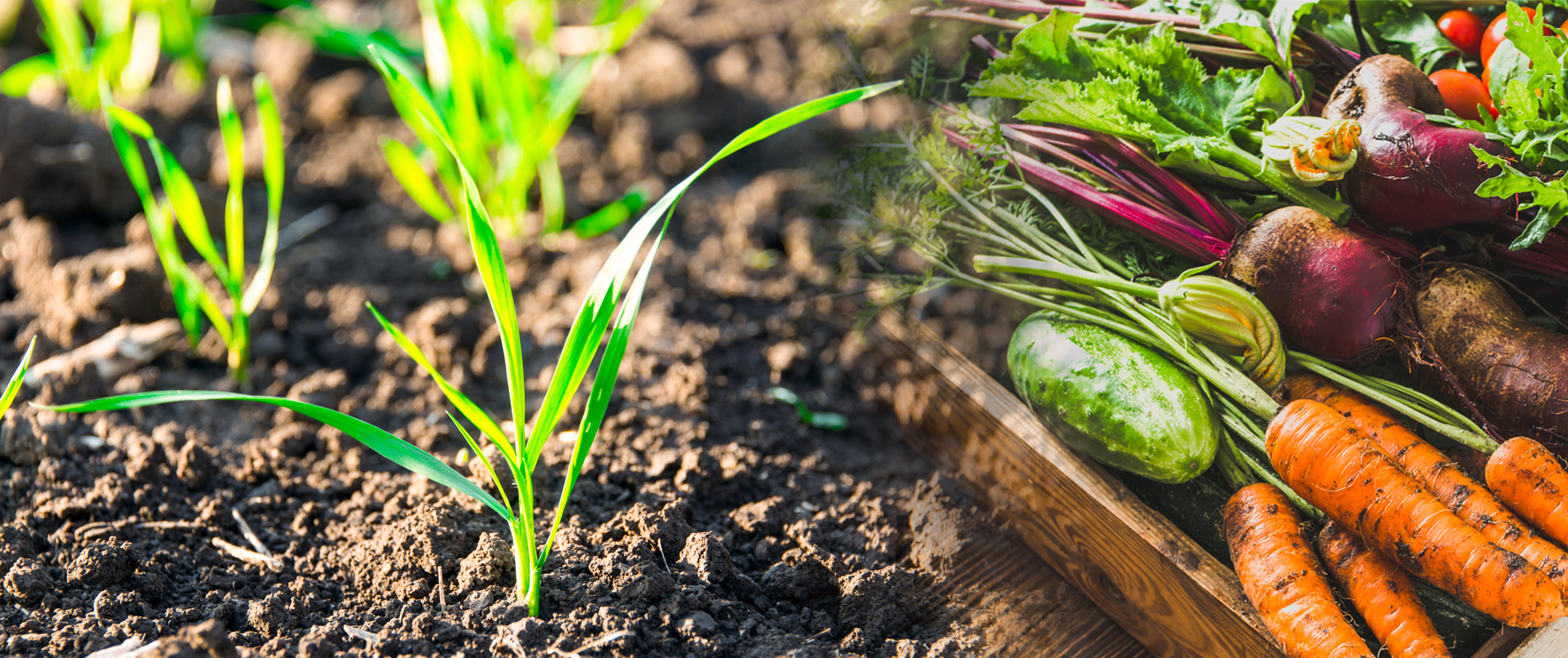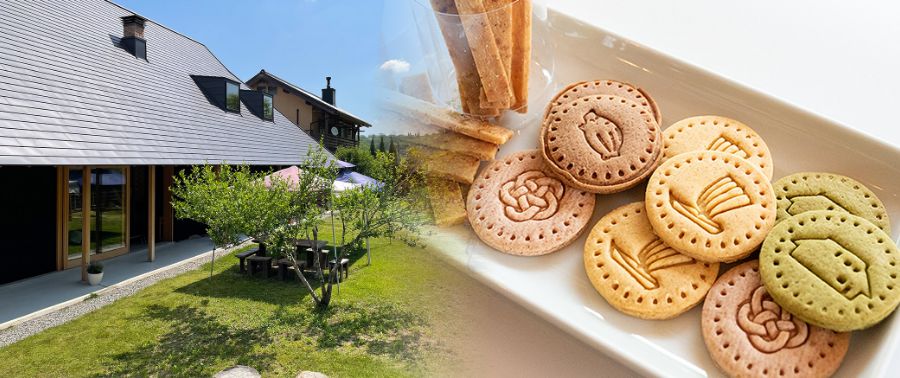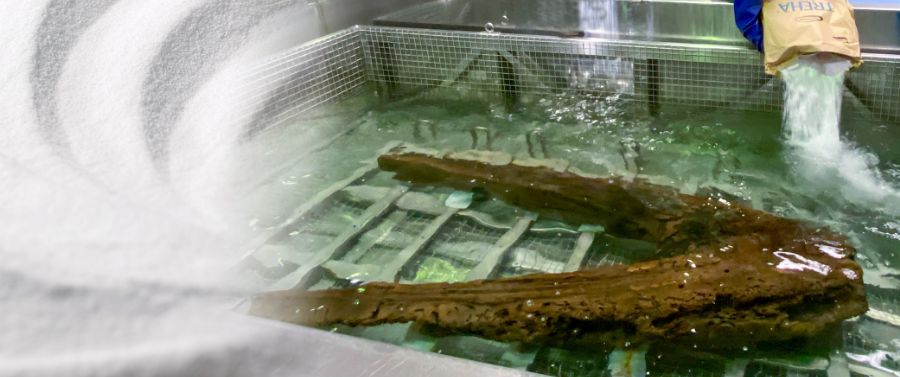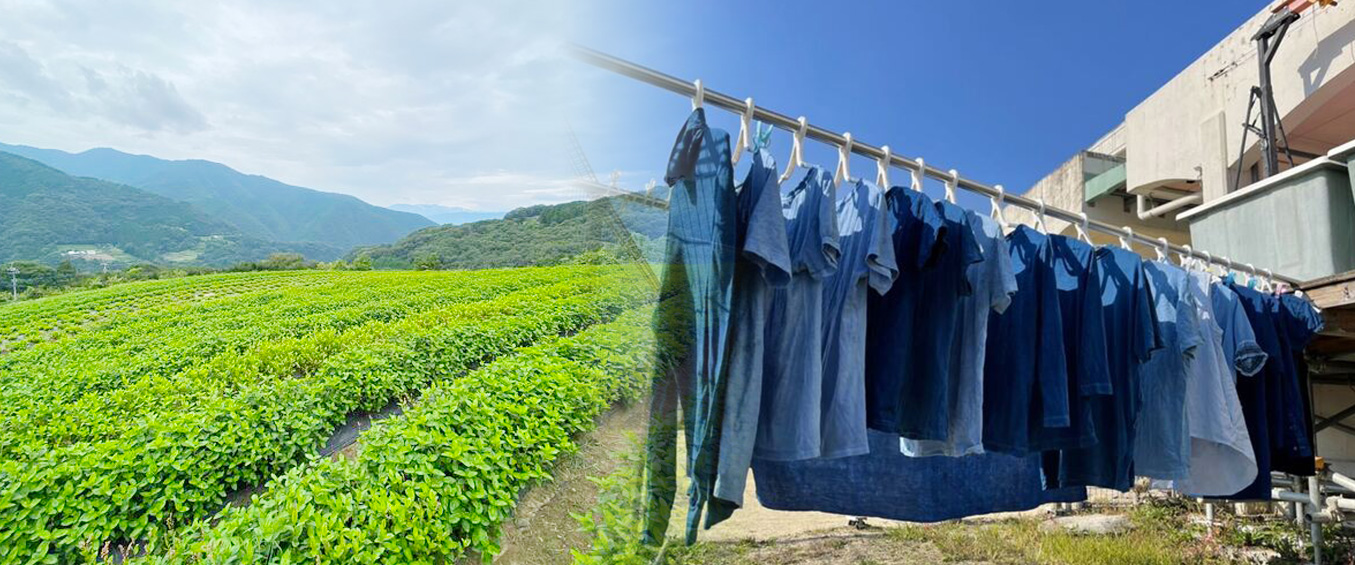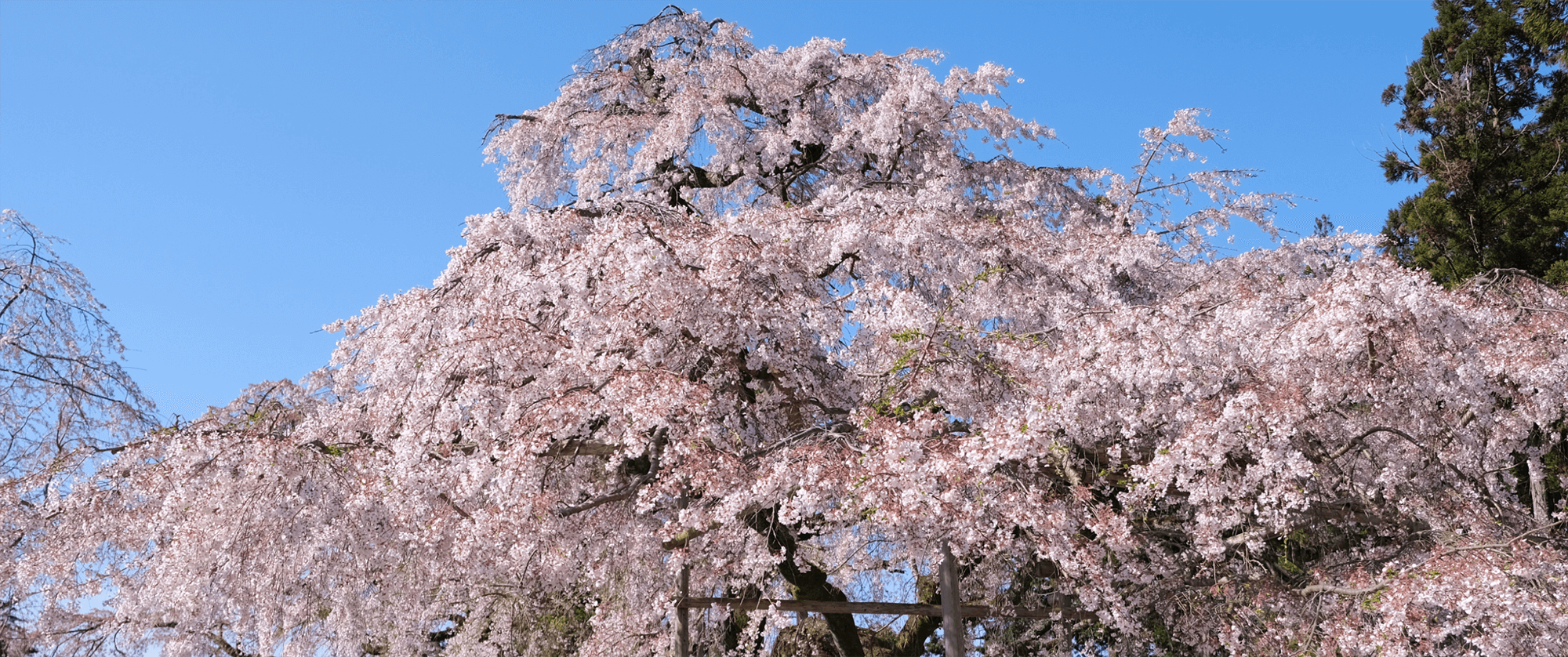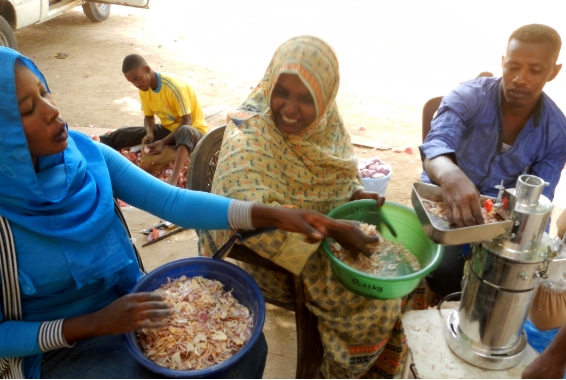
Sustainable Stories
Nagase Viita's WEB Magazine
01Story
June 01, 2021
Exploiting Nature’s Fruits to the Fullest Efforts of a dried fruit manufacturer in Minami Shinshu
Located in the nature-rich Shimoina region of Nagano Prefecture, the Minami Shinshu Confectionery Factory is engaged in creating dried fruit products that make the most of the ingredients’ natural flavors. In addition to contributing to the revitalization of local agriculture and the reduction of food loss through agri-processing, the company pursues sustainable initiatives such as generating biomass fuel using the sugar solution that is a by-product.

Established in Minami-Shinshu, where the culture of dried persimmons and traditional confectionery lives on
Blessed with a mild climate and the rich natural environment of Japan’s Southern Alps, the Shimoina region has been known since ancient times for its dried persimmons and has nurtured a local industry in the production of tea cakes such as monaka, sponge cake, and jellies, known as “half-baked confectionery.”
The Minami Shinshu Confectionery Factory was established in 2012 by Yusuke Kinoshita, the eldest son of a family that ran a traditional half-baked confectionery company. His aim was to create a completely new style of confectionery,
This new confectionery is characterized by the unique quality of the dried fruits, which are mainly locally grown persimmons, apples, and citrus fruits.
At the time, the popularity of granola meant that people had more and more opportunities to eat dried fruits. However, as most of them were produced overseas, the sweetness and flavoring were too strong and the texture too hard for Japanese tastes. Kinoshita was convinced that if he could make a safe product with Japanese-grown dried fruits that brought out the original flavor and color of the natural ingredients but with a milder sweetness, many people would enjoy eating them.
To his disappointment, the response of the family company was that the product would not sell because it was more than twice the price of overseas products. So he decided to realize his ambition by starting his own business.
Says Kinoshita: “As I continued working hard to create tasty products, their goodness was slowly recognized, and a major local supermarket began to carry them. Since then, the production volume has increased year by year and the company has grown.”
The Minami Shinshu Confectionery Factory was established in 2012 by Yusuke Kinoshita, the eldest son of a family that ran a traditional half-baked confectionery company. His aim was to create a completely new style of confectionery,
This new confectionery is characterized by the unique quality of the dried fruits, which are mainly locally grown persimmons, apples, and citrus fruits.
At the time, the popularity of granola meant that people had more and more opportunities to eat dried fruits. However, as most of them were produced overseas, the sweetness and flavoring were too strong and the texture too hard for Japanese tastes. Kinoshita was convinced that if he could make a safe product with Japanese-grown dried fruits that brought out the original flavor and color of the natural ingredients but with a milder sweetness, many people would enjoy eating them.
To his disappointment, the response of the family company was that the product would not sell because it was more than twice the price of overseas products. So he decided to realize his ambition by starting his own business.
Says Kinoshita: “As I continued working hard to create tasty products, their goodness was slowly recognized, and a major local supermarket began to carry them. Since then, the production volume has increased year by year and the company has grown.”
Semi-fresh dried fruits — richly moist and soft and made with homegrown produce
The flagship product is Wagiri Lemon. The round-sliced, honey-soaked lemons are moist, glossy, soft to the peel, and bright in color. Says Ryo Oshima, in charge of quality control: “I bet it’s totally different from any dried fruit you’ve tried before!” Take a bite and the refreshing, sweet-sour taste spreads and makes you smile.
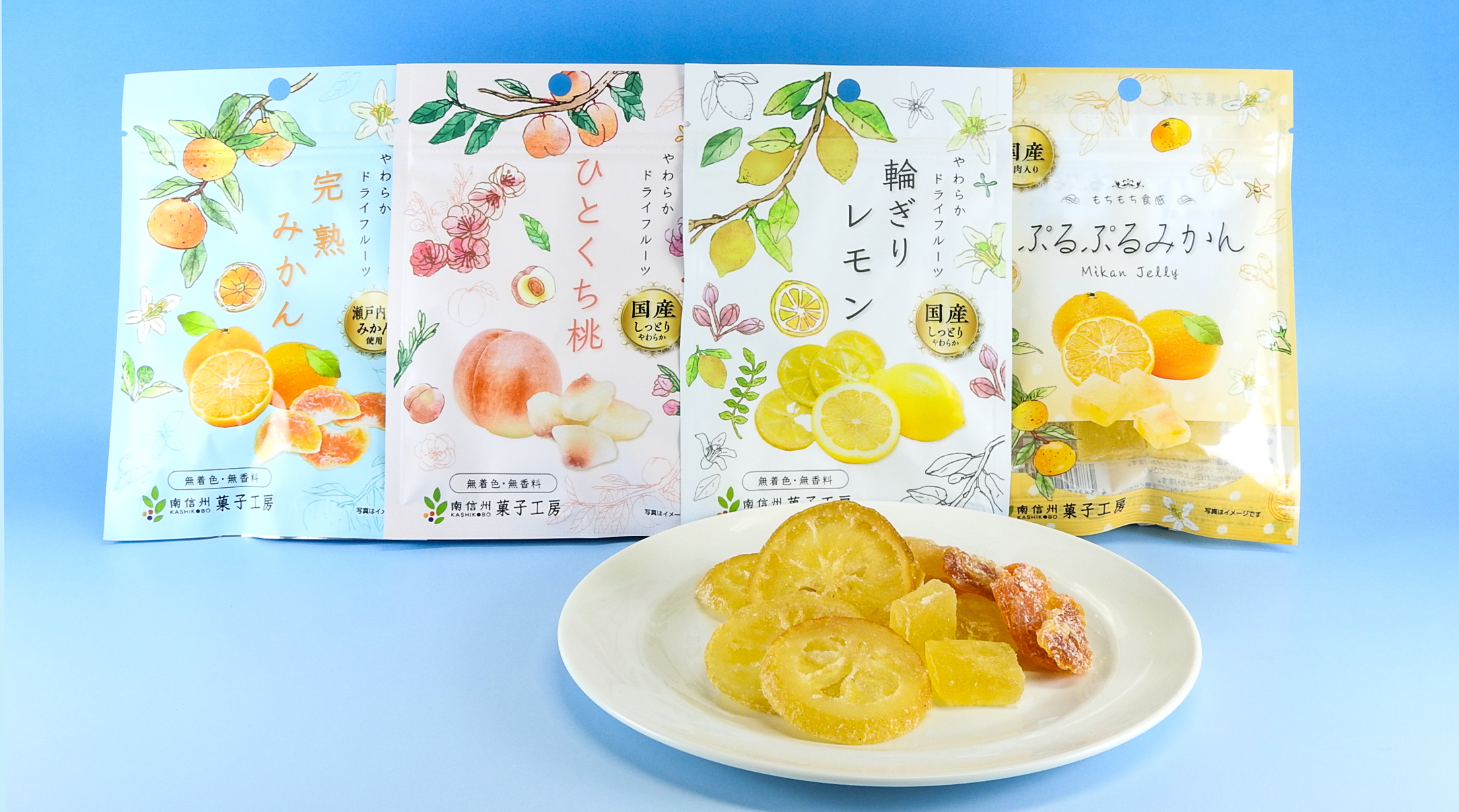 Dried fruits and Puru-Puru product
Dried fruits and Puru-Puru product
The secret of its deliciousness lies in a process called “vacuum concentration,” which was developed in-house. This process allows the syrup to soak into the fruit without heating it, thus preserving the flavor and color of the ingredients themselves.
Another important twist is in the syrup made with Nagase Viita’s trehalose. If the syrup is made with sugar alone, it crystallizes on the surface of the fruit and become hard as it dries, but adding trehalose allows the syrup to retain the fruit’s softness even after several days. The sweetness of trehalose is milder than that of sugar, allowing the natural flavor of the fruit to be preserved.
“In the process of developing the dried fruits, we were very grateful to the staff of Nagase Viita not only for their help with the syrup, but also for their support in areas that have nothing to do with their product” says Oshima.
“Our dried fruits are easily oxidized because they are unheated, and it was a challenge to find a way to prevent that issue while maintaining taste and safety” he continues.
“When we were having a hard time, the sales representative of Nagase Viita researched for us a product from another company, which we tried out and found to be perfect. That helped us a lot.”
Another important twist is in the syrup made with Nagase Viita’s trehalose. If the syrup is made with sugar alone, it crystallizes on the surface of the fruit and become hard as it dries, but adding trehalose allows the syrup to retain the fruit’s softness even after several days. The sweetness of trehalose is milder than that of sugar, allowing the natural flavor of the fruit to be preserved.
“In the process of developing the dried fruits, we were very grateful to the staff of Nagase Viita not only for their help with the syrup, but also for their support in areas that have nothing to do with their product” says Oshima.
“Our dried fruits are easily oxidized because they are unheated, and it was a challenge to find a way to prevent that issue while maintaining taste and safety” he continues.
“When we were having a hard time, the sales representative of Nagase Viita researched for us a product from another company, which we tried out and found to be perfect. That helped us a lot.”
What a waste! — A reaction that drives creativity and ingenuity
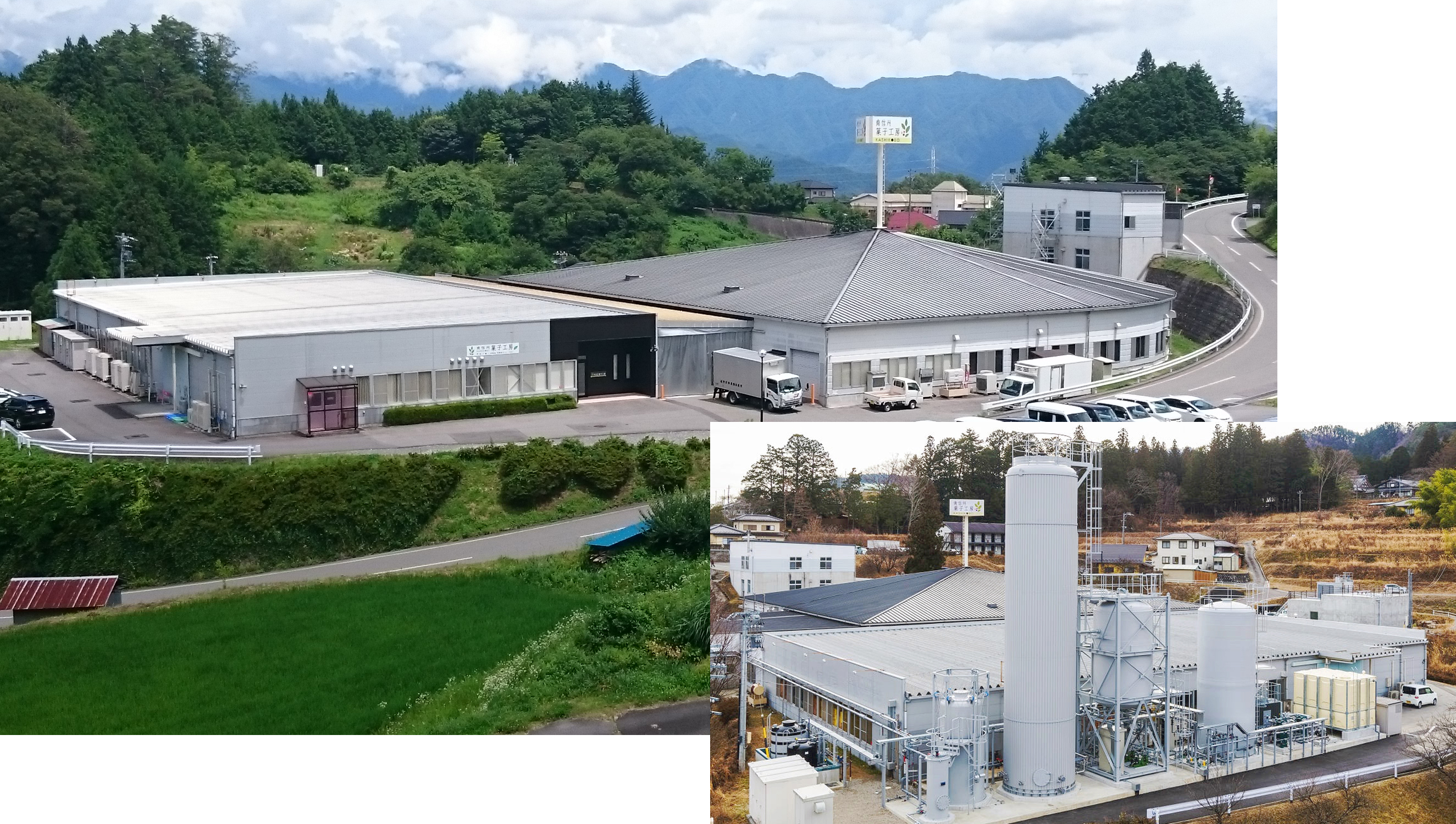 Exterior view of the Anan Plant and wastewater treatment facility
Exterior view of the Anan Plant and wastewater treatment facility
The sales of their dried fruits were steadily increasing, yet there was one problem in the production process: the liquid syrup that remains after the fruit is soaked. Obviously, the syrup with its high sugar content could not be disposed of as is, so it had to be processed in a special facility. For a long time, there were concerns about not only the cost, but also the negative impact on the environment and the sheer waste.
To resolve the issue, the company introduced a facility that decomposes and refines the sugar solution. The methane gas generated during the process is reused as fuel for the factory, which helps to reduce CO2 emissions.
The syrup, rich in fruit extracts, is also used as a base material for other products. This is how the company developed the Puru-Puru series of products, a new twist on the traditional jelly confectionery.
A chewy, springy texture is a specialty of trehalose. The staff of L’Plaza, Nagase Viita’s application development section, tasted the syrup and said it would be a shame not to use something so delicious, so they worked hard together to develop a recipe.
Puru-Puru products contain pieces of dried fruit in the syrup, which has become popular for its luxurious fruitiness. The company has successfully upcycled the by-product syrup material into a valuable product while reducing food loss and environmental impact.
To resolve the issue, the company introduced a facility that decomposes and refines the sugar solution. The methane gas generated during the process is reused as fuel for the factory, which helps to reduce CO2 emissions.
The syrup, rich in fruit extracts, is also used as a base material for other products. This is how the company developed the Puru-Puru series of products, a new twist on the traditional jelly confectionery.
A chewy, springy texture is a specialty of trehalose. The staff of L’Plaza, Nagase Viita’s application development section, tasted the syrup and said it would be a shame not to use something so delicious, so they worked hard together to develop a recipe.
Puru-Puru products contain pieces of dried fruit in the syrup, which has become popular for its luxurious fruitiness. The company has successfully upcycled the by-product syrup material into a valuable product while reducing food loss and environmental impact.
Making a small contribution to raising environmental awareness as an agri-processing manufacturer
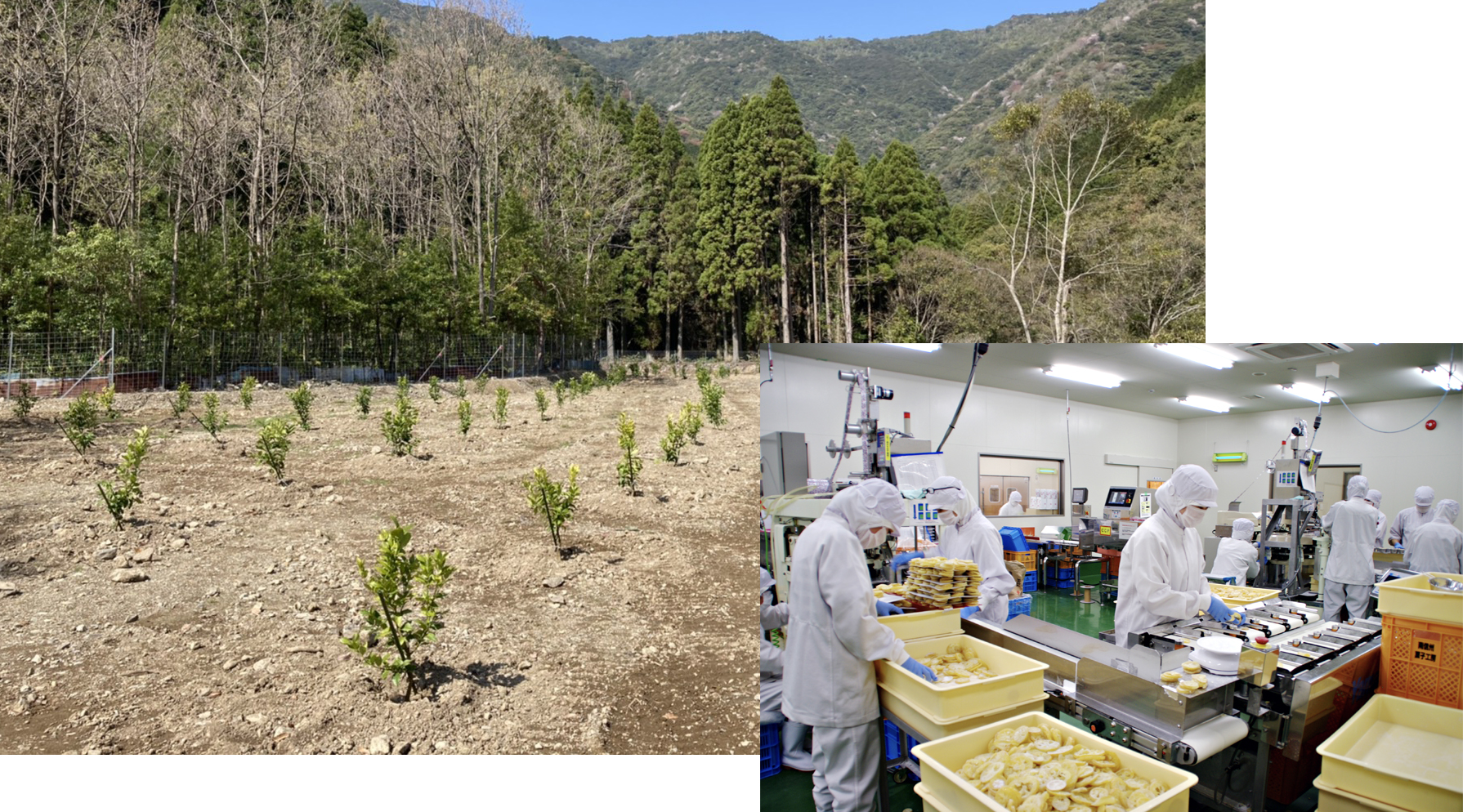 Oita Saeki Farm, Lemon Farm and Head Office Factory No. 2 with FSSC22000 certification
Oita Saeki Farm, Lemon Farm and Head Office Factory No. 2 with FSSC22000 certification
The dried fruit manufacturing at the Minami Shinshu Confectionery Factory has another important aspect: protecting local farmers. The ingredients are perfectly tasty, but slightly blemished or out of specification in shape, so cannot be sold on the market for fresh consumption. In general, such off-spec produce is sold off at a low lot price or discarded, but the factory purchases it at a price that reflects its quality and processes it into products with minimal waste.
In 2019, the company started its own orchard on land in Oita Prefecture that had been idle due to a lack of farmers, and is now cultivating lemons, a regional specialty.
In this way, the Minami-Shinshu Confectionery Factory is moving one step beyond making safe and delicious confectionery to take on the challenge of a range of sustainable initiatives. What is the thinking behind these efforts?
President Kinoshita explains.
“We believe that our business is only possible when farmers make good agricultural produce. If we cannot grow crops due to abnormal weather or natural disasters, we will not be able to continue our business. Therefore, even though it is only a small contribution, we are willing to help protect the natural environment.”
In 2019, the company started its own orchard on land in Oita Prefecture that had been idle due to a lack of farmers, and is now cultivating lemons, a regional specialty.
In this way, the Minami-Shinshu Confectionery Factory is moving one step beyond making safe and delicious confectionery to take on the challenge of a range of sustainable initiatives. What is the thinking behind these efforts?
President Kinoshita explains.
“We believe that our business is only possible when farmers make good agricultural produce. If we cannot grow crops due to abnormal weather or natural disasters, we will not be able to continue our business. Therefore, even though it is only a small contribution, we are willing to help protect the natural environment.”
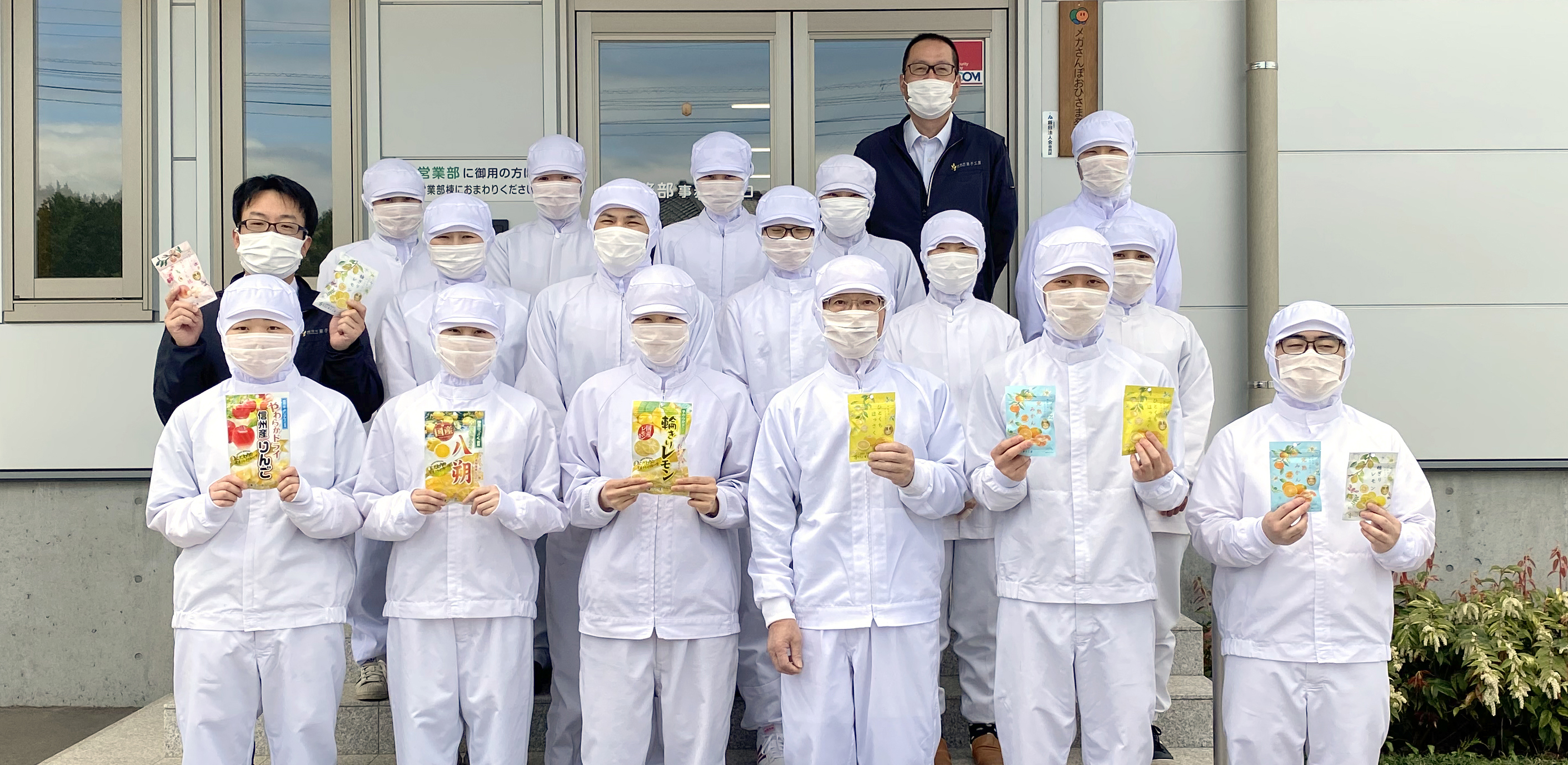 Mr. Kinoshita (4th row), Mr. Oshima (2nd row, left), and employees
Mr. Kinoshita (4th row), Mr. Oshima (2nd row, left), and employees
His concern also extends to the younger generation who will create the future. “When I first started the company, I was satisfied as long as I could make the products I wished to make. But now we have been lucky enough to grow and have new employees joining every year, so I have begun to think about their future.
I want our employees to always be proud of their job, especially because this is a field that involves a lot of honest hard work. To that end, I think about what kind of company we should be, and I am willing to try anything I find worthwhile.”
Nagase Viita will continue to support the activities of the Minami Shinshu Confectionery Factory by supplying products and cooperating in the development of recipes.
I want our employees to always be proud of their job, especially because this is a field that involves a lot of honest hard work. To that end, I think about what kind of company we should be, and I am willing to try anything I find worthwhile.”
Nagase Viita will continue to support the activities of the Minami Shinshu Confectionery Factory by supplying products and cooperating in the development of recipes.
- ■NBS Nagano Broadcasting "Assets of Shinshu we want to protect" #23 Minami Shinshu Confectionary Workshop (YouTube)
- ■Minami Shinshu Confectionery Factory Website (Japanese):https://www.373shinshu.com/
 Minami Shinshu Confectionery Factory Co.
Minami Shinshu Confectionery Factory Co.
- Sustainability Initiatives:
- ●Reducing food loss by using fruits that cannot be sold in the market due to slight flaws or out of specification as dried fruits
- ●Successfully upcycled the by-product syrup material into new products while reducing food loss and environmental impact
- ●Revitalizing the region by cultivating lemons, a local specialty, on farmland that had been idle due to a lack of producers
- ●Using wastewater purification facilities to generate renewable energy and reduce CO2 emissions
